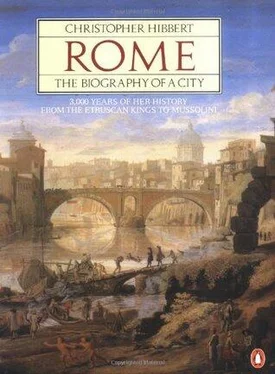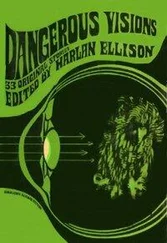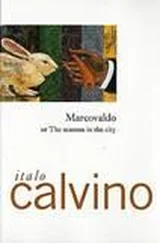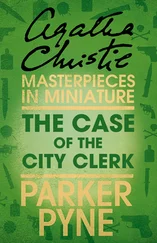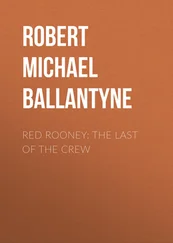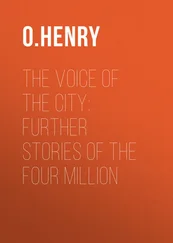Christopher Hibbert - Rome. The Biography of the City
Здесь есть возможность читать онлайн «Christopher Hibbert - Rome. The Biography of the City» весь текст электронной книги совершенно бесплатно (целиком полную версию без сокращений). В некоторых случаях можно слушать аудио, скачать через торрент в формате fb2 и присутствует краткое содержание. Жанр: Культурология, Искусство и Дизайн, на английском языке. Описание произведения, (предисловие) а так же отзывы посетителей доступны на портале библиотеки ЛибКат.
- Название:Rome. The Biography of the City
- Автор:
- Жанр:
- Год:неизвестен
- ISBN:нет данных
- Рейтинг книги:3 / 5. Голосов: 1
-
Избранное:Добавить в избранное
- Отзывы:
-
Ваша оценка:
- 60
- 1
- 2
- 3
- 4
- 5
Rome. The Biography of the City: краткое содержание, описание и аннотация
Предлагаем к чтению аннотацию, описание, краткое содержание или предисловие (зависит от того, что написал сам автор книги «Rome. The Biography of the City»). Если вы не нашли необходимую информацию о книге — напишите в комментариях, мы постараемся отыскать её.
Rome. The Biography of the City — читать онлайн бесплатно полную книгу (весь текст) целиком
Ниже представлен текст книги, разбитый по страницам. Система сохранения места последней прочитанной страницы, позволяет с удобством читать онлайн бесплатно книгу «Rome. The Biography of the City», без необходимости каждый раз заново искать на чём Вы остановились. Поставьте закладку, и сможете в любой момент перейти на страницу, на которой закончили чтение.
Интервал:
Закладка:
23. The FOUNTAIN OF THE FOUR RIVERS, whose water is supplied by the TREVI FOUNTAIN, was completed after four years' work in 1651. The four rivers, each represented by a stone figure, are the Nile, the Danube, the Ganges and the River Plate. The figures, designed by Bernini, were executed by his assistants. That of the Nile has its face covered as an allusion to its then unknown source; but it was said at the time that the covering was introduced by Bernini so that the statue would thus not be able to see the façade of S. AGNESE designed by his rival, Borromini. The cost of the fountain was raised by levying taxes on various commodities including bread, which naturally gave rise to widespread protest. The obelisk which rises above the rocks is a Roman copy that stood in the Circus of Maxentius. The FOUNTAIN OF THE MOOR, which stands at the southern end of the PIAZZA NAVONA, was originally created by Giacomo della Porta in 1575. Bernini reconstructed it and himself made the central figure of the Moor.
24. First built in the fourth or early fifth century on a site belonging to a Roman matron named Lucina, the Church of S. LORENZO IN LUClNA was rebuilt by Sixtus III (432–40). During the pontificate of Pope Paschal III (1099–1118) the church was restored and the portico added. It underwent further restoration by Cosimo Fanzago in about 1650. The caissoned and gilded ceiling was restored by Pope Pius IX. The high altar, designed by Carlo Rainaldi, is surmounted by a crucifixion by Guido Reni. The bust of the painter, Nicholas Poussin, was commissioned from Lemoyne by Chateaubriand; that of Gabriele Fonseca in the Fonseca Chapel is by Bernini. The adjoining PALAZZO FIANO, which belonged in the middle of the fifteenth century to the Portuguese cardinal Giorgio da Costa and was consequently known as the Palazzo di Portogallo, was considered then to be one of the finest palaces in Rome after the VATICAN. Having passed through the hands of the Peretti, the Savelli and the Ludovisi, it was acquired by the Ottoboni. Marco Ottoboni, a nephew of Alexander VIII (1689–91), married a Boncompagni from whom he acquired the Duchy of Fiano. At the end of the nineteenth century the façade of the palace and much of the interior was completely altered for the new owners, the Almagià family, by Francesco Settimi.
25. The charming oval church of S. ANDREA AL QUIRINALE is exquisitely decorated with marbles and stucco work. Designed in 1658, it took twelve years to finish. The statue of St Andrew above the main altar, which seems to be soaring to heaven on a cloud, is by Bernini's assistant, Raggi. While work on this church was in progress the magnificent Baroque church of S. ANDREA DELLA VALLE was being completed in Corso Vittorio Emanuele. Maderno, Rainaldi and Fontana all contributed to the design of the façade.
26. The idea of a COLONNADE in ST PETER'S PIAZZA seems to have been in the minds of both Alexander VII ( 1655–67) and Bernini before the Pope's election. Certainly the Pope had not long been in office when he sent for Bernini and began to discuss with him and the Fabbrica how to achieve this great undertaking. There were a number of factors to be taken into account: the old entrance to the VATICAN PALACE, north of the portico, had to be retained, as well as the space immediately in front of the façade, known as the piazza retta . The Pope's window in the Vatican Palace from which papal blessings were given had to be in the sight of the largest possible number of people. So also had the loggia above the central entrance of the basilica which he used for his blessings urbi et orbi on ceremonial occasions. Bernini envisaged the space thus to be enclosed as a place where the faithful would receive the embrace of the Almighty. The colonnades were to symbolize the embracing arms. The geometrical centre of the whole design remained the great obelisk in the middle of the piazza. With great ingenuity Bernini managed to shrink the impression of unwieldy width left by Maderno's façade – which had to incorporate the base of Bernini's uncompleted towers at either side of the front – by throwing out two long low corridors which narrowed the space of the piazza retta as they advanced from the basilica. In addition he compressed the apparent width of the piazza within the colonnades by making this an oval 240 metres long. The colonnades consist of four rows of Doric travertine columns and pilasters supporting lines of gigantic angels.
27. The SCALA REGIA leads from the ceremonial entrance of the VATICAN PALACE to the papal apartments. Before Bernini completed this grand stairway in 1666, the popes had had to descend to St Peter's by a dark narrow staircase from the CAPPELLA PAOLINA past the SISTINE CHAPEL to the portico of the basilica. Having overcome the problems presented by the narrowness of the space available and the lack of light, Bernini regarded the staircase as his major technical achievement.
28. Above the altar in the apse of ST PETER'S Bernini created a scenic spectacle which, seen through the twisted columns of the BALDACCHINO, was to be the culmination of the view along the nave of the basilica. It is the CATHEDRA, a reliquary of the basilica's precious relic, a wooden chair with ivory ornamentation on which St Peter was supposed to have sat when he was a guest in the house of Pudens on his first arrival in Rome. First referred to in a written text in 1217, the chair was probably made in the eighth or ninth century. The bronze throne the with gilded reliefs which encases the relic is surrounded by four large bronze statues of the great doctors of the Church, Saints Augustine, Ambrose, Athanasius and John Chrysostom.
29. The Vatican Department or Congregation of Propa-ganda Fide was founded in 1622 by Pope Gregory XV (1621–3) for spreading the Catholic Faith in heathen and heretic lands. It was Urban VIII, however, who decided to build a suitably large office for this important missionary organization. The main façade, on the south side of the PIAZZA DI SPAGNA, was finished by 1644. Two years later Bernini was joined by Borromini who completed the façade overlooking the Via di Propaganda in 1662.
30. When Innocent X built new prisons in Via Giulia in 1644, the site of the TOR DI NONA was cleared for the TORDINONA THEATRE, later renamed the Apollo. After being burned down, it was rebuilt by Valadier in 1830, but was later demolished once more for the Tiber embankment.
31. Originally built by the Emperor Hadrian's architect, Demetrianus, and called the Pons Aelius, the PONTE SANT' ANGELO was reconstructed in 1668. The statues of angels carry symbols of Christ's passion.
32. First built in 1231 to replace the chapel of the Hospice of St Biagio where St Francis had lodged, the church of S. FRANCESCO A RIPA was rebuilt in 1682–9 by Mattia de' Rossi. The statue of St Francis is believed to have been commissioned by his disciple, Jacopa da Settesoli, and is perhaps the work of Margaritone d'Arezzo. Bernini's statue of the Blessed Ludovica Albertoni is in the Altieri Chapel, so called because Cardinal Paluzzi degli Albertoni, who commissioned it, took the name of Altieri when he became related by marriage to Clement X (1670–76). Ludovica Albertoni, who entered the third order of St Francis, died in Rome in 1503 and gave all her worldly goods to the poor.
33. The PALAZZO DI MONTECITORIO was built over the site of an earlier Colonna palace. Begun in 1651, it was completed in 1694. Carlo Fontana adapted the building for use as law courts in the pontificate of Innocent XII. It was enlarged at the beginning of the twentieth century by Ernesto Basile for the Lower House of the Italian Parliament which still sits here. East of the Palazzo, on the north side of the Piazza Colonna, is the PALAZZO ALDOBRANDINI-CHIGI. This was probably designed by Carlo Maderno, although it has also been ascribed to Giacomo della Porta. Having previously belonged to Cardinal Pietro Aldobrandini, it was bought in 1659 by the Chigi Pope, Alexander VII, who employed Felice Della Greca to alter it for him and to design a new façade on Piazza Colonna. It is now the seat of the Presidenza del Consiglio.
Читать дальшеИнтервал:
Закладка:
Похожие книги на «Rome. The Biography of the City»
Представляем Вашему вниманию похожие книги на «Rome. The Biography of the City» списком для выбора. Мы отобрали схожую по названию и смыслу литературу в надежде предоставить читателям больше вариантов отыскать новые, интересные, ещё непрочитанные произведения.
Обсуждение, отзывы о книге «Rome. The Biography of the City» и просто собственные мнения читателей. Оставьте ваши комментарии, напишите, что Вы думаете о произведении, его смысле или главных героях. Укажите что конкретно понравилось, а что нет, и почему Вы так считаете.
